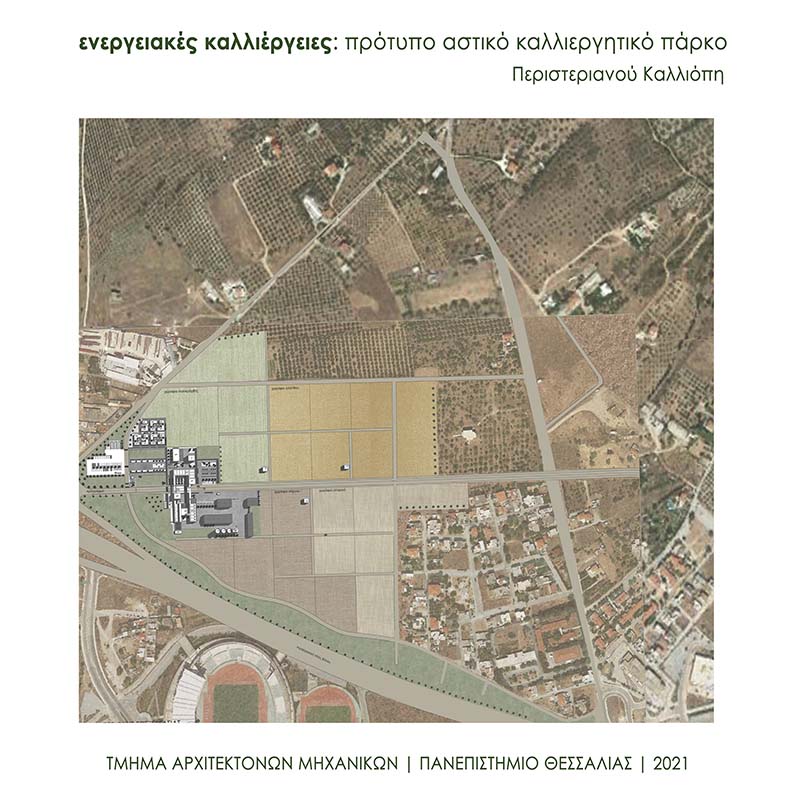

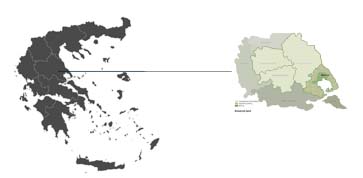



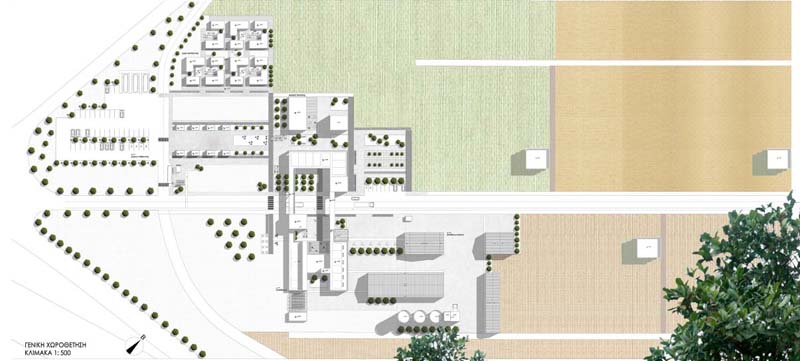

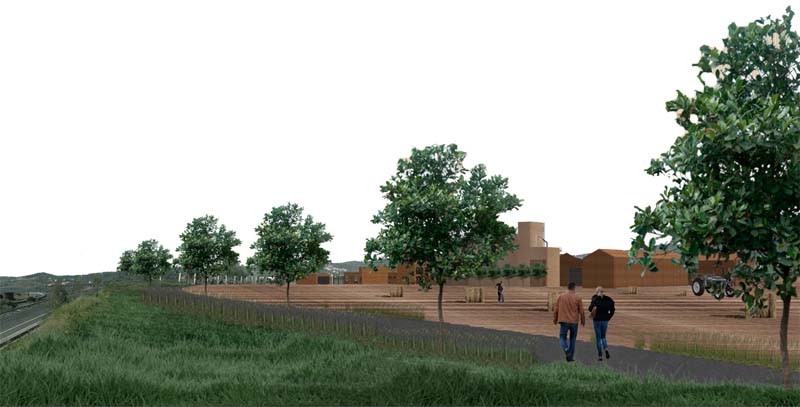

The present dissertation is based on the hypothesis and design of a model urban agricultural park with energy crops in the city of Volos. The proposal is based on the problems of water scarcity and drought that the Thessalian Plain is facing for the past decades, combined with the efforts of many farmers to support this new type of crop. Energy crops include traditional or industrial plants mostly used for the production of biofuels.
The park is located on the city lines of Volos, amongst an urban and an agricultural landscape, on the borders of the Volos ring road. The park consists of four main divisions. More specifically: the energy crops, that cover most of the park’s space and according to the proposal will be also used as means of biofuel production, the administration offices, handling the proper management of the park, the training center and seed storehouses, which enable the visitor to tour and get informed about energy crops as well as to observe closely all the agricultural processes, and the recreational part, which consists of an open-air market, an accommodation area, a dining area and all the routes developing between the crops.
The purpose of this park is to create a “green lung” for the city which will enable the visitor to get familiar with this new type of crops. It will also contribute to the residents’ quality of life, facilitate the production of biofuels and serve as a model for the creation of similar spaces.
Supervisor: Gavrilou Evelyn
Reference Number: 865
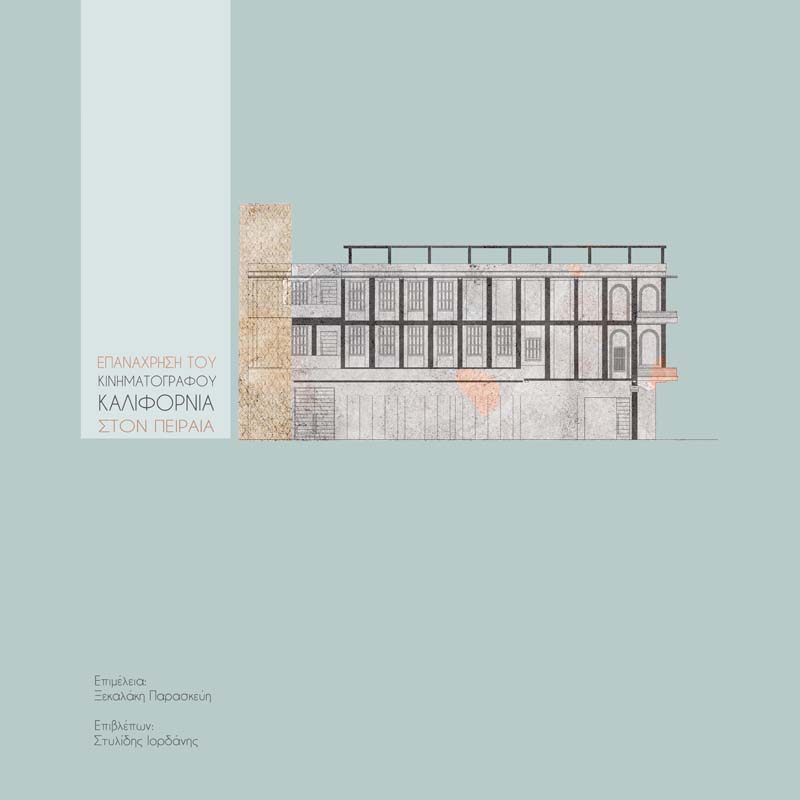

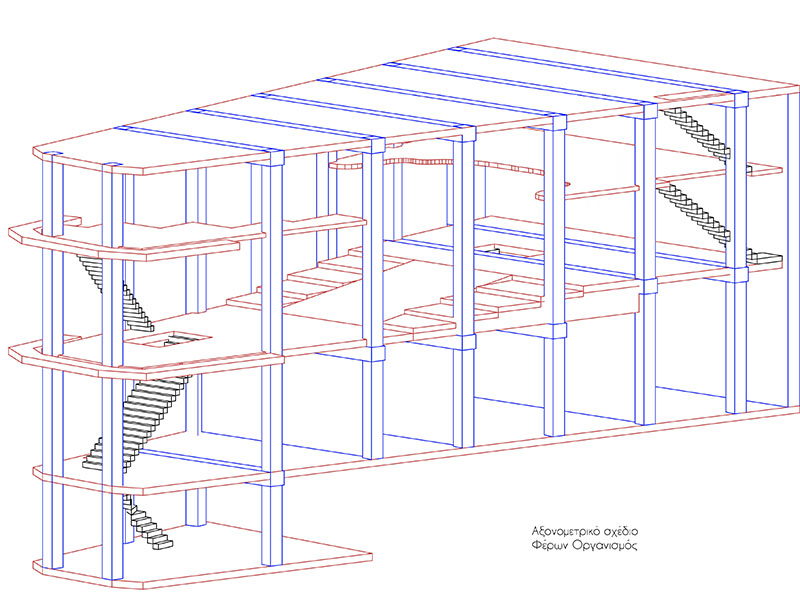

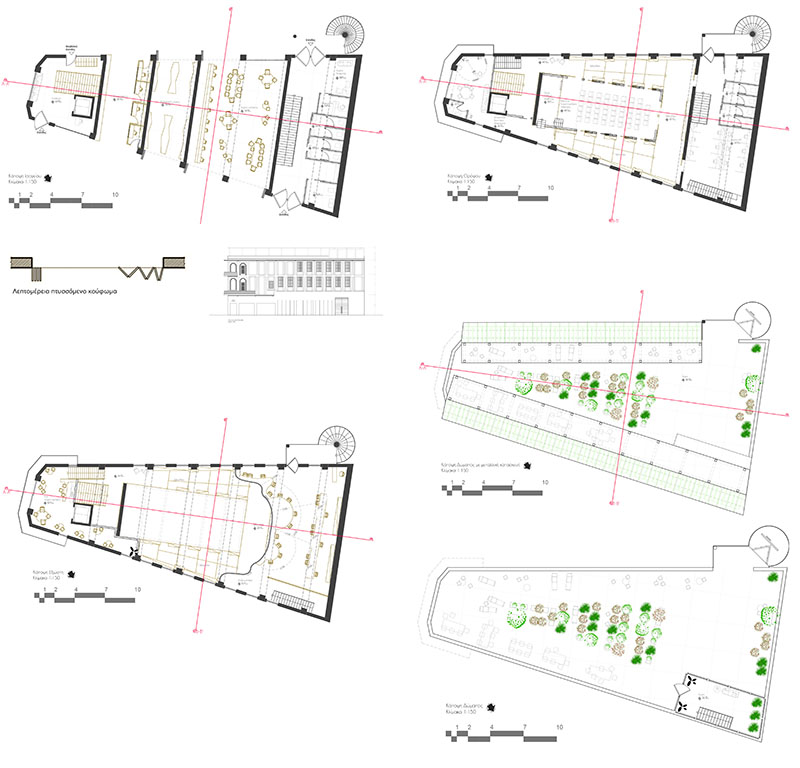

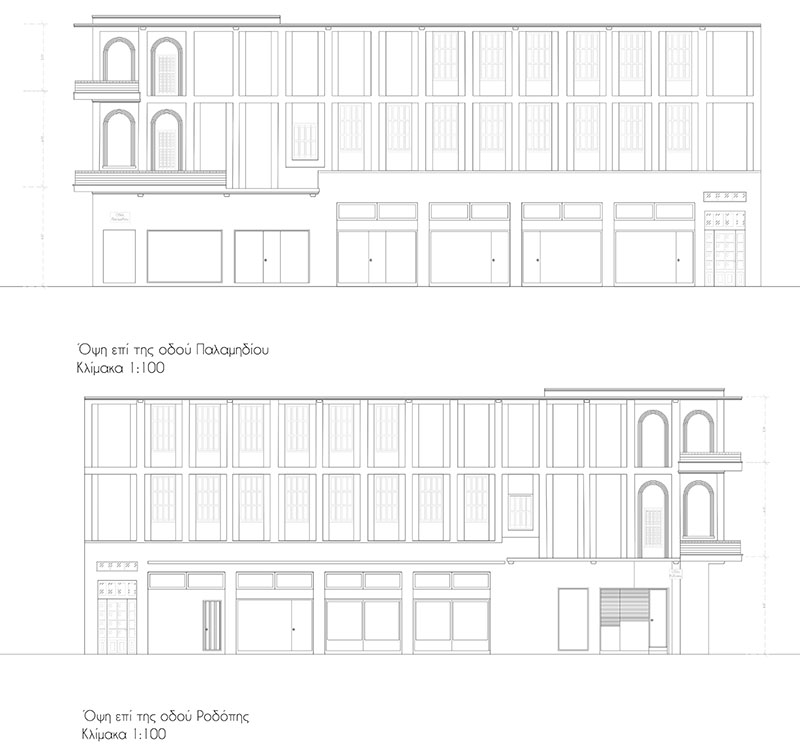

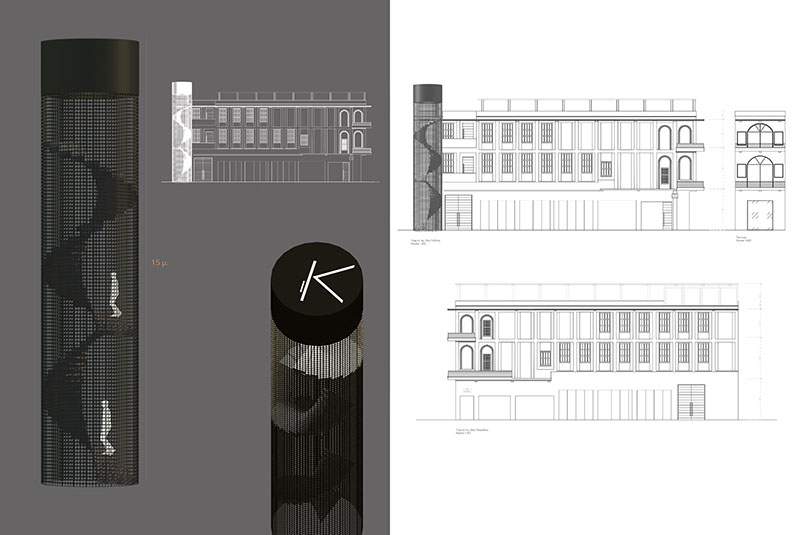

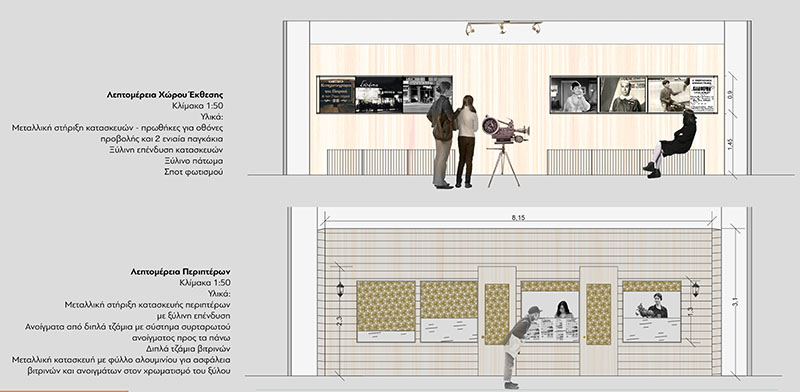

Spatial transformations in cities are expressions of culture. One medium that illuminates their historical causes is the political-aesthetic influence of cinema (integrated transmission of systems of ideas about space and relationships in time) in each local or wider social organization. Cinema is the creative way of expressing and influencing ideas-behaviors about architecture in space and time.
In my essay I chose the investigation and the design proposal of the transformation - reuse of the California theater. The building is located at the junction of Antipolarchou Vlachakou and Palamidiou streets, in the Agia Sofia district of Piraeus. Its construction took place in the late 1930s and its operation as a theater began on January 25, 1931. Apart from its important history as a carrier of aesthetic importance, established in its particular morphological elements - neoclassical style - it is, in addition, landmark of the wider area, which is evident even today despite its abandonment in the last 40 years.
The reuse of old buildings - guided by the modern needs of the citizens’ thought-political vigilance is a vital element for the smooth maintenance-duration of their urban functions. My purpose is to highlight each and every aesthetic-functional obligations in the reuse proposal, in order to cover - answer the modern functional upgrade possibilities both in the building and in the area where it exists.
Supervisor: Stylidis Iordanis
Reference Number: 913
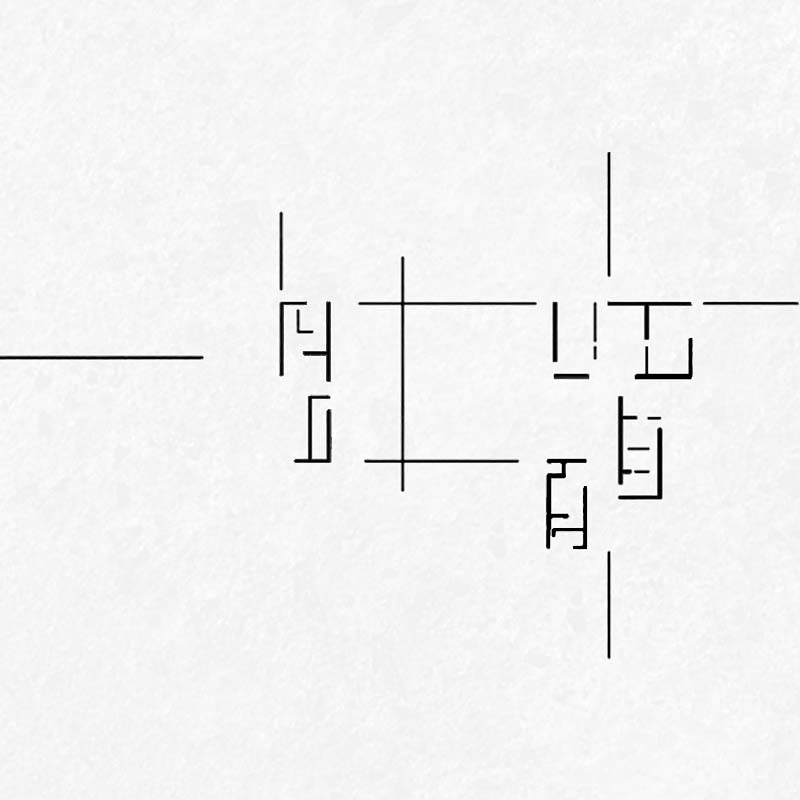

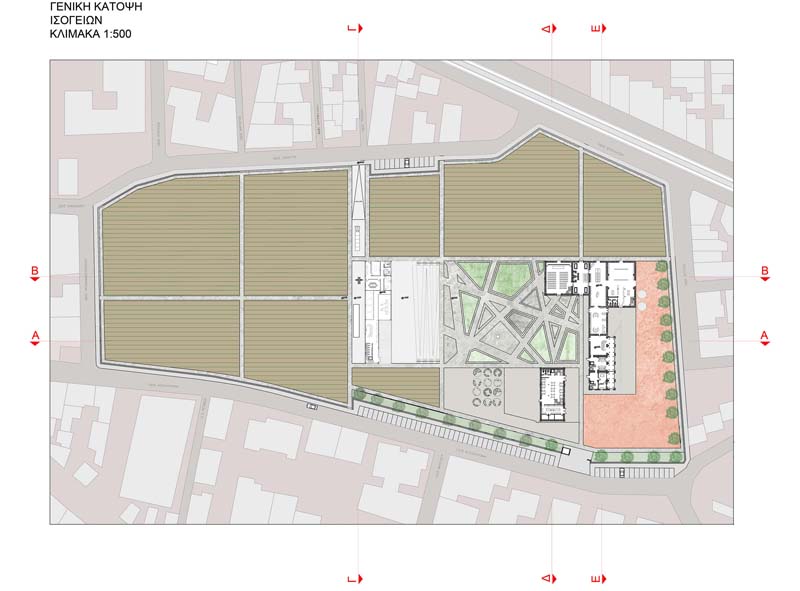

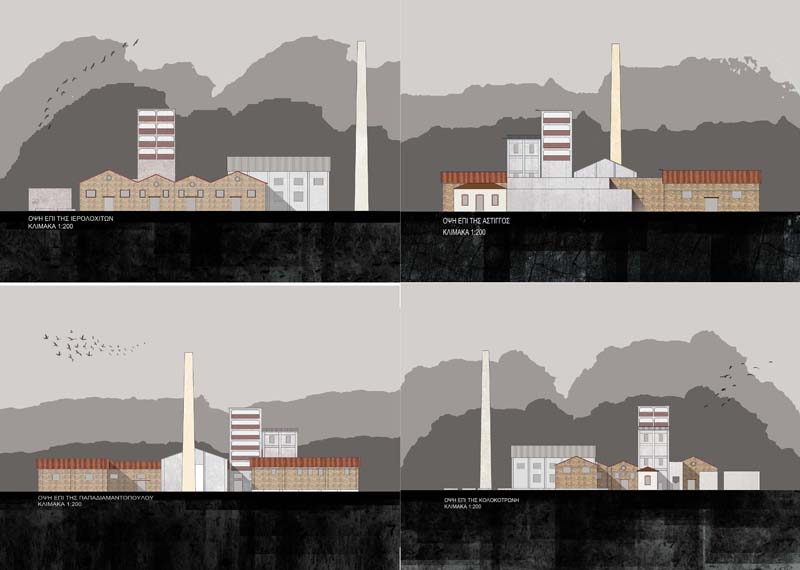

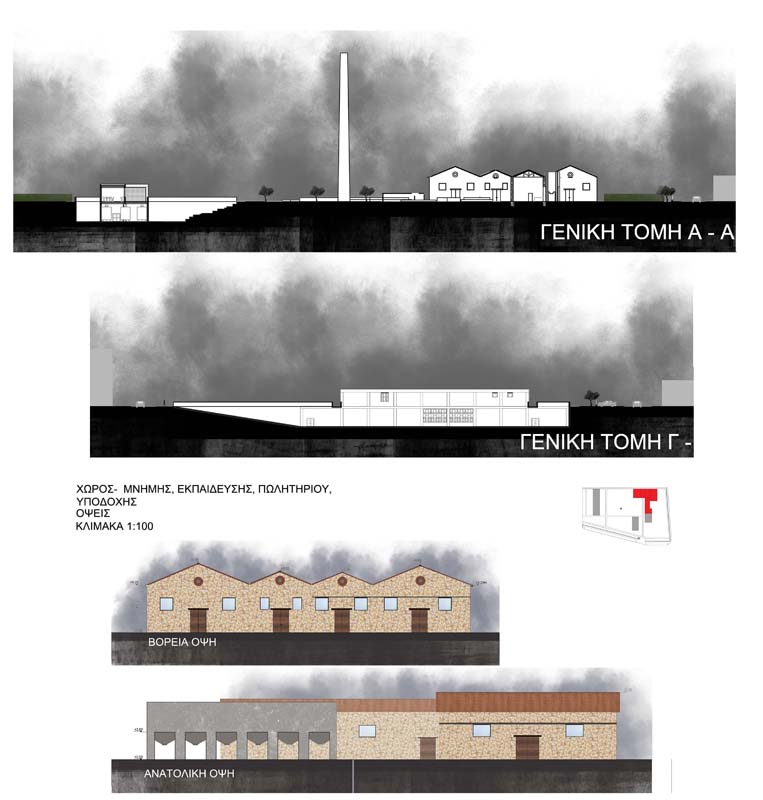

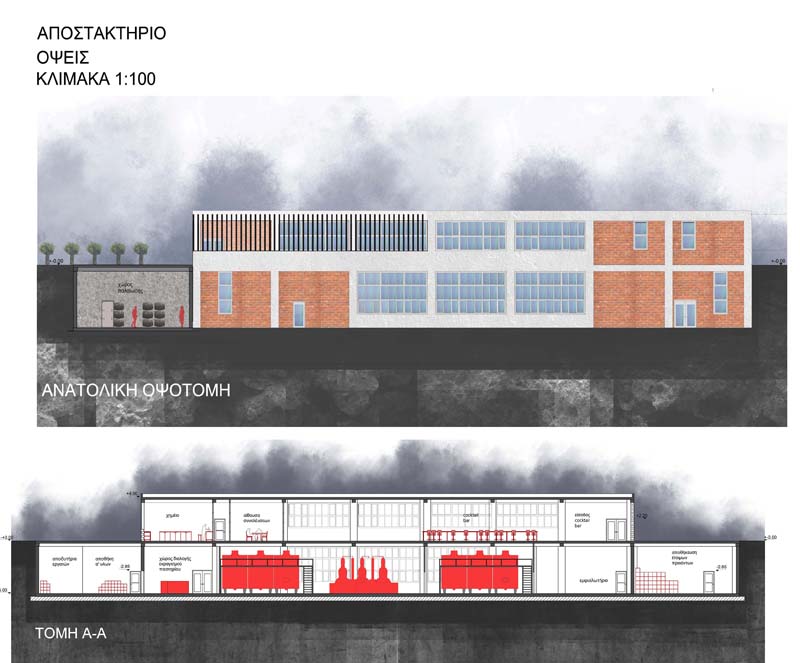

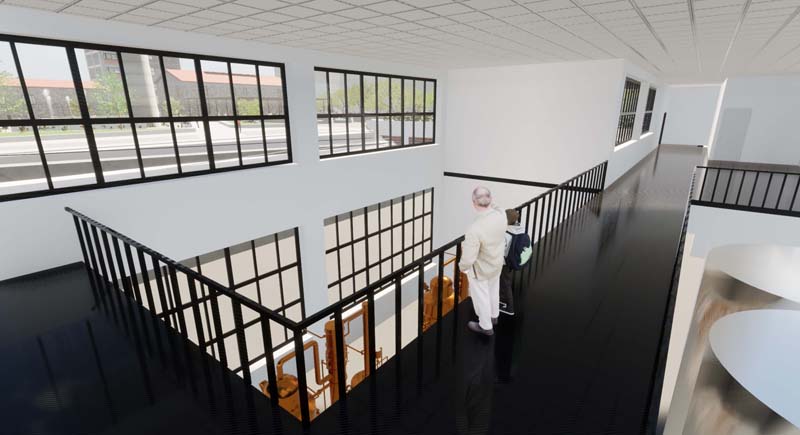

The following thesis is about revaluating and re-designing the building remains of the alcohol factory in the area “Ag. Anargyroi” in Volos, also known as “Oinopnevma”, as well as about the creation of a new distillation unit on the same ground. It is suggesting a variety of new uses of the site, aiming to promote a local traditional product.
Thus, the core of the new proposal is the construction of a tsipouro distillery, while venues for accommodation, remembrance, education and recreation will be co-housed with the existing facilities.
An urban vineyard and an amphitheater, the last also being the entrance of the new building, will be located across the surrounding area and the rest of the site.
This proposal aims to highlight the architecture of the pre-existing buildings as well as the chimney, which constitutes the landmark of the particular site as well as of the entire area.
This area as a whole will be addressed to a wide audience. To producers who want to be informed about the production of distillates, to students and schools that want to learn about the process of producing tsipouro as well as about the history of the site, but also to ordinary visitors who want to get familiar with and participate in the production process.
In the same time it would be the first ever museum of tsipouro in Volos, something we consider as necessary, due to the connection of the city with the specific distillate. Furthermore, many more different events can be carried out on the site and most importantly anyone will be able to enjoy the product in its production area.
The challenge lies in the fact that the new interventions are called to converse with a place of memory, of distinct historical and symbolic value, as a monument of modern history and the country’s cultural heritage. Re-designing the site converts it into a dynamic tourist destination, intending to offer various activities to the visitors.
Supervisor: Adamakis Kostas
Reference Number: 869
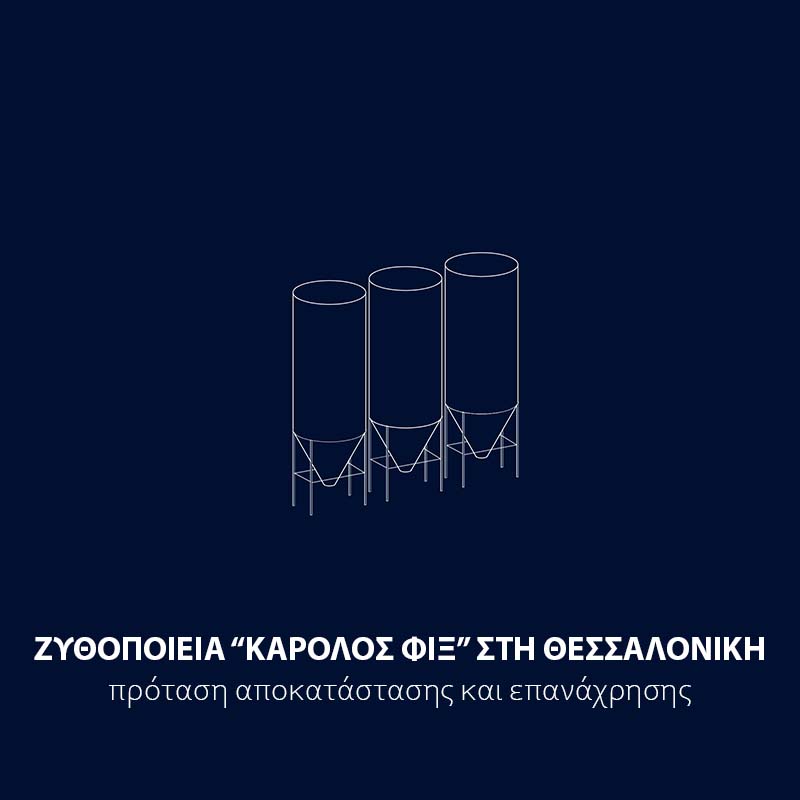

In the past, the complex "Karolos Fix" operated as a brewery. In combination with the other industries of Western Thessaloniki, but also with the transport networks, they contributed to the development of the region. For this reason, the old slaughterhouses became a pole of attraction, extending the existing center to the west.
However, over time many industries were abandoned resulting in the region being devalued. With the declaration of many buildings as protected historical monuments at the end of the 20th century and their reuse, mainly as cultural centers, there was a gradual return to Behcinari (old slaughterhouses).
Nevertheless, the Fix brewery complex, since it ceased operations in 1983, remains abandoned to this day. Its designation as a protected historical monument in 1994 did not contribute to the restoration of its individual buildings. The newer ones are used as entertainment venues, while the historic buildings remain empty.
The case of the complex is not an isolated example, since worldwide and especially in Greece there is a plethora of abandoned and empty building shells. In an effort to reintegrate them into the urban fabric, this dissertation is a proposal for restoration and reuse. Specifically, it is proposed to create an industrial history museum, a design school and an office building. The flow of these functions is connected to the history of the area, the coverage of the needs observed in the city of Thessaloniki, but also the correlation of the functions with each other.
The lack of public design schools and available space for existing universities to house cutting and standardization machinery and equipment justifies the establishment of the school. The school of design includes sections of fashion design, furniture / object design, ceramics, jewelry design and web design. The office building welcomes graduates of the school and the field of arts and architecture, offering economical housing solutions for their work, in order to start their career. Lastly, the significant area of the open air is the next function, which connects the previous ones. Reunites the city with FIX, and functions as a public park.
Supervisor: Trova Vasso
Reference Number: 890
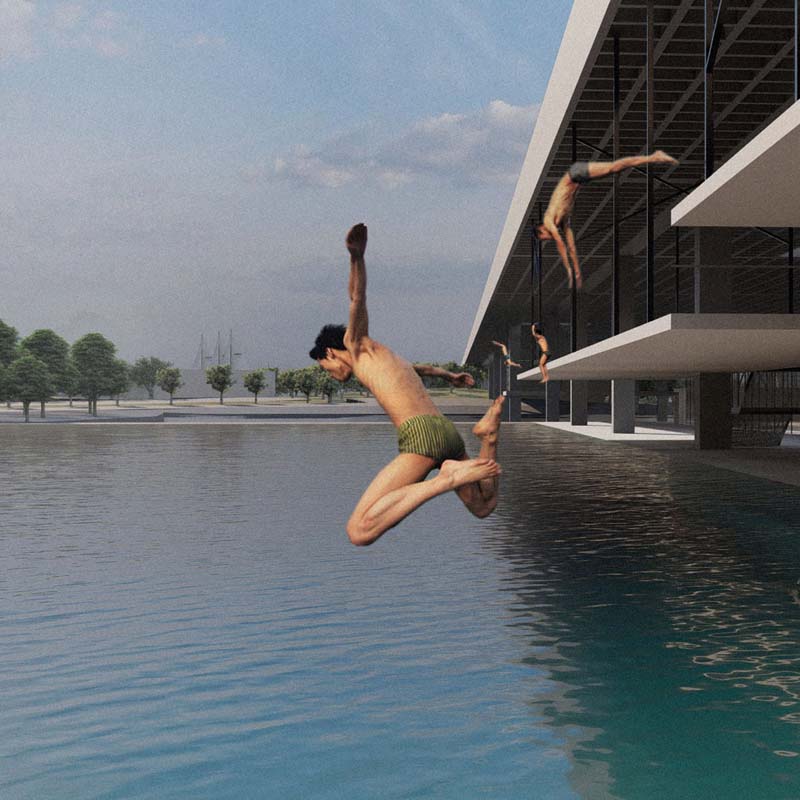

During the era of the COVID-19 pandemic, when freedom of transportation is no longer a given, the existing problems escalated and are more than apparent. Finding a permanent solution is now called for more than ever. In this situation the first city that comes to one’s mind is the city of Athens, where, although being surrounded by the sea, the easy access to the latter is almost impossible. Syggrou Avenue determines the bisection between Athens and the seascape, being situated at the waterfront of Phaleron. The only way through the avenue is the overpass named Εsplanada. This thesis aspires to reverse this bisection and reconnect Athens Basin to the seascape by extending Esplanada from the highest point through the Saronic Gulf. This action creates a linear movement from the city ending to the sea, defusing the city mass in the water. As a jetty ends up in the sea and the water is changing beneath so does the ground in this project; meaning that everything is unfixed and potentially considered water. The void between the jetty and the ground is like a non-place, where everything can occur regardless of what is happening in the city. Therefore, variable spaces emerge related to the human body end especially facilities about entertainment and pleasure. The linear array of these spaces of any volume, aspect/shape and use, composes a linear endless-like building having the jetty as a roof.
Supervisor: Paniyiris Costis
Reference Number: 891
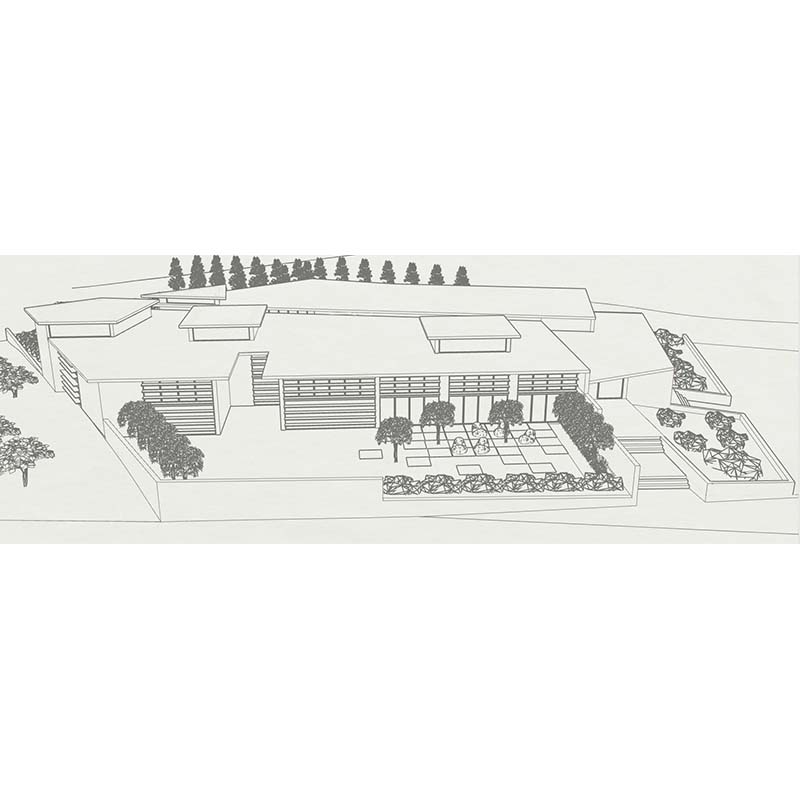

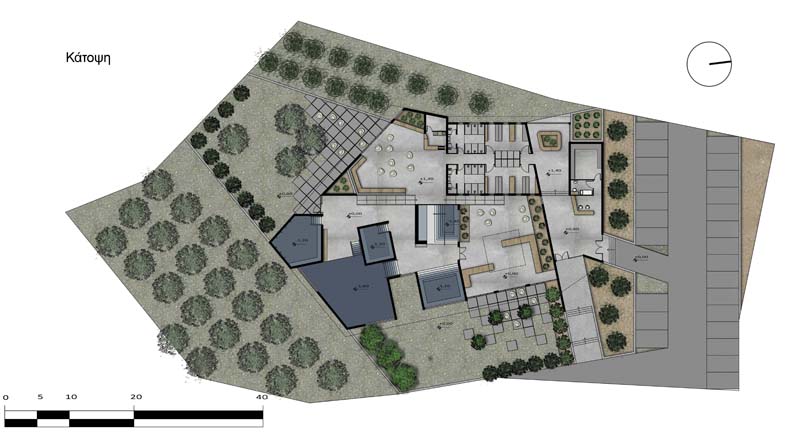



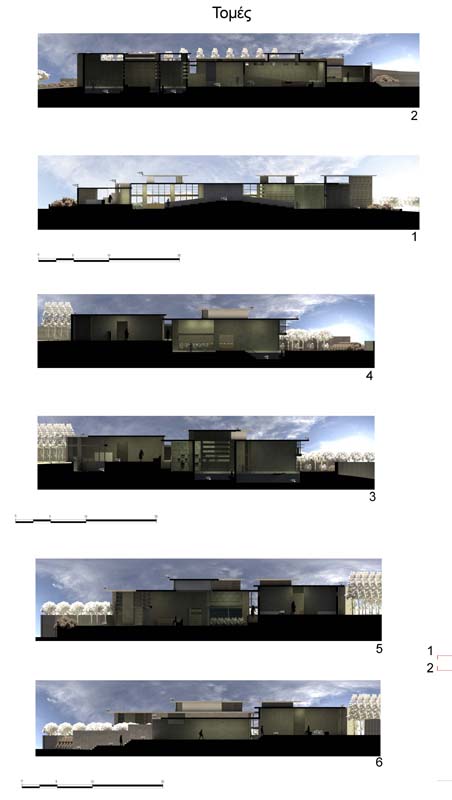

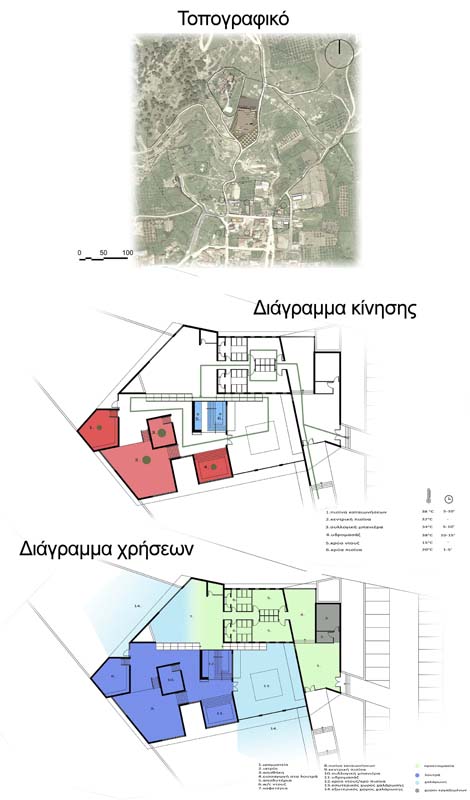

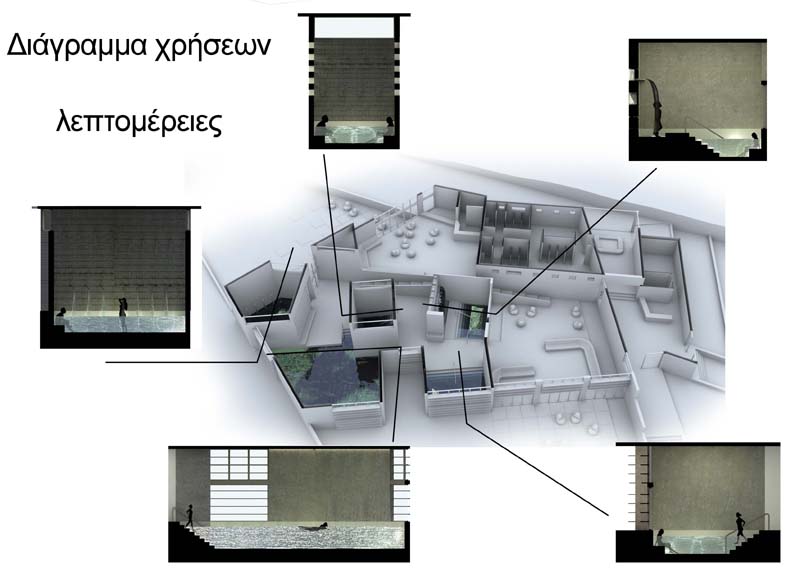

The dissertation has been written with the aim of creating a thermal centre in the village of Rizoma, in Trikala’s prefecture.
Although the spring has been known since around 146 B.C., its healing properties were officially acknowledged in 2018.
The aim of the present study is the utilization and prominence of the thermal waters of “Loutzia” as well as their promotion with the ultimate goal of becoming a draw for thermal tourism.
The bath facilities have had a two-fold use and importance since ancient times. They were places of gathering and communication as well as spiritual uplift and contemplation.
During the stay in the thermal centre, each bather experiences a method of informal psychotherapy and escape from the tedious rhythms of the contemporary man’s routine, which overwhelms him with anxiety and stress. The mild and relaxing environment within which he moves contributes to this by activating the well-being and rejuvenation of the human body. It is oriented towards people of all ages and can work to prevent, maintain and restore health as well as rest, therefore aiming at an improved quality of life. In order for the visitor to experience the baths at a prime level, the hydrotherapy centrehas been designed following the three stages for a complete bath therapy:
Introduction to the Baths
Baths
Relaxation
This thermal centre will become a magnet for therapeutic tourism and will contribute to local economic prosperity and promotion of the Rizoma area.
My ancestry, my late grandfather’s ardent desire to promote the spring as well as the personal contacts and interviews with residents of the area determinedly contributed to my decision to carry out this research with respect towards local tradition and culture.
Supervisor: Lykourioti Iris
Reference Number: 860
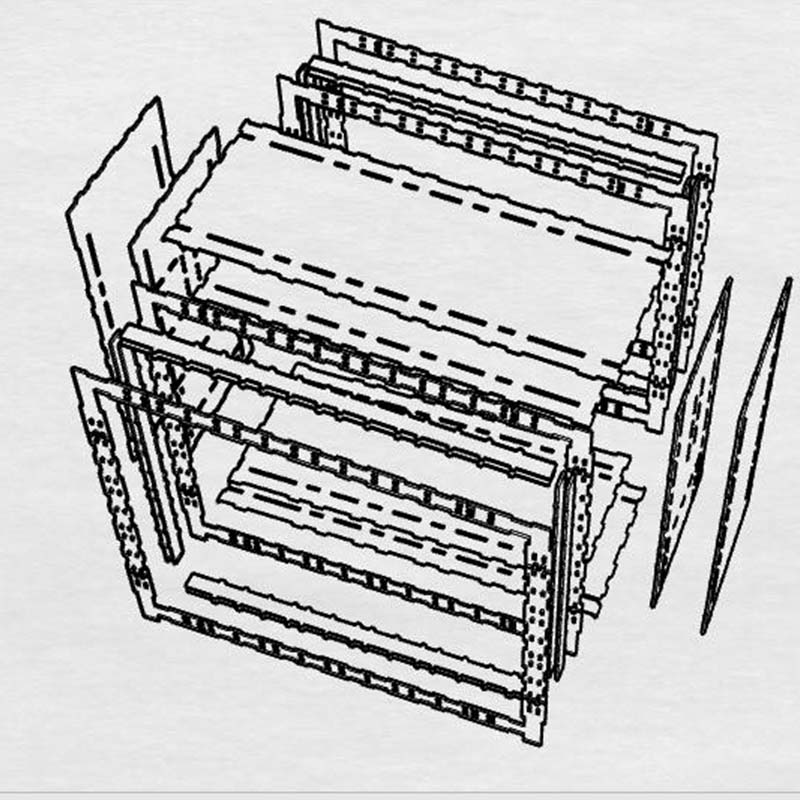

In this dissertation it is analyzed the development of prefabricated modules, utilizing ψηφιακών μέσων παραγωγής, for the demonstration of digital material. Main goal, through research and the inheritance of history of prefabrication, is to be designed lightweight construction modules which replicated will be able to fulfill the requirements of an exhibition.
The central idea behind this project is based on open construction design, which will be publicly available for modification in forums. Τhe production of modules that can be used everywhere without high costs for the construction or transportation and with the least technical knowledge as possible is the fundamental goal of this project.
Placement in open areas and in every terrain, the use of CNC and lightweight materials are the prerequisites of this development.
At the first chapter, it will be mentioned the research done in order to finally design the aforementioned modules. Firstly, there will be definitions of key-words as a means to better understand the subject.
Furthermore, a brief discussion about the history of prefabrication will be made and afterwards through previous examples of prefabrication I will try to clarify the meaning and essence of the matter. In addition, a categorization of the styles and forms of prefabrication will be made.
The second part is about my proposal for the design of prefabricated modules serving for the subject of my dissertation.
In the third part it will be demonstrated in detail the tests that have been done for the implementation of small scale modules and the way I followed in order to decide their final form.
Supervisor: Psychogyios Dimitris
Reference Number: 912


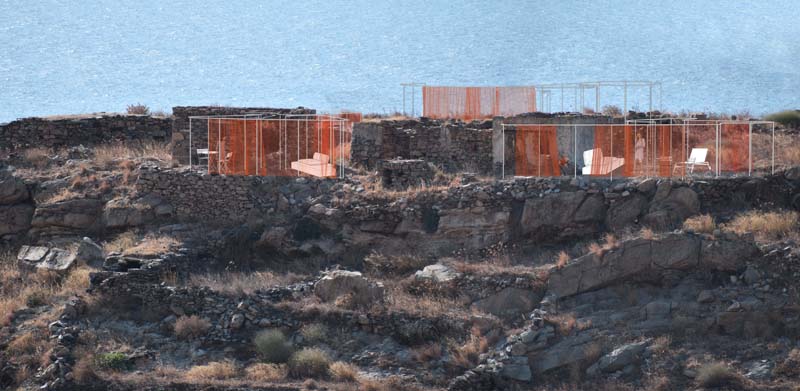

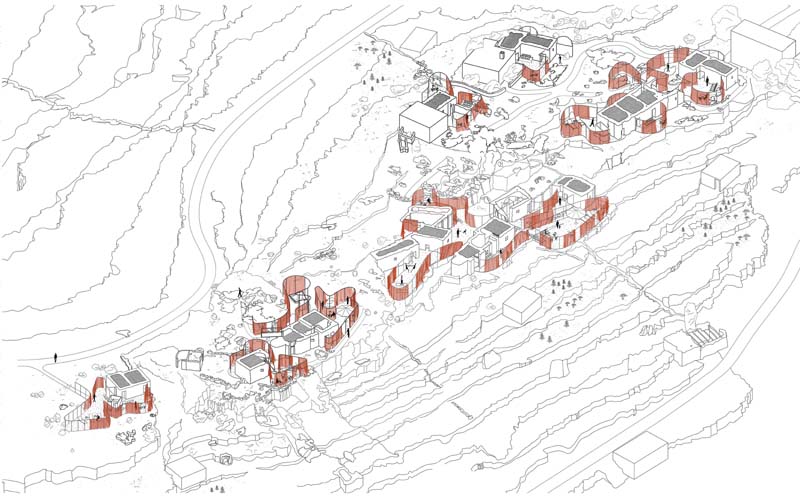



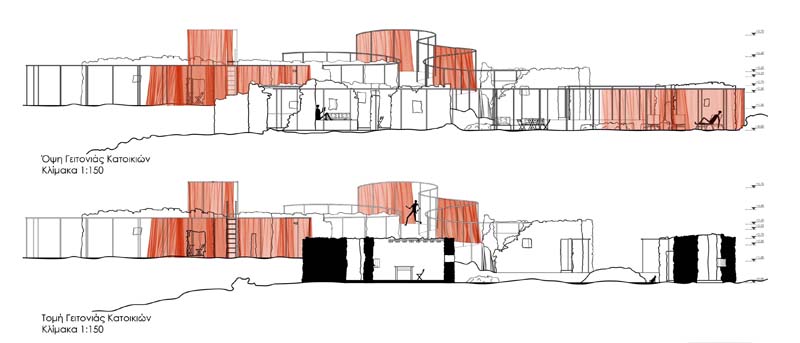



The present Dissertation was prepared in the academic year 2020 - 2021 during the 10th Semester of the Department of Architecture and Engineering of the University of Thessaly. This Dissertation seeks the establishment of a new border between the “inside” and “outside” on the remnants of the working houses of Serifos, so that they can be reused, and ultimately, resettled. A gesture, a line in the form of fabric, operates like a garment to a naked body in order to embrace the new fragile limit; such a thin border, so easily changing, as the curtain which surrounds it.
Through this border, a kind of summer residence is being created combining elements of both usual residence and camping. The main feature of this settlement is the direct physical involvement of the tourist/resident of the ruin, since he is called to manage the net according to the Beaufort. It folds, opens, shrinks, hangs, creating its own personal spaces.
The design approach of the abovementioned intervention results from a conglomeration of elements capable of meeting the basic needs of the tourist. The humble architecture offers to the tourists, during their accommodation, a parallel contact with the ruin and the nature.
The purpose of this new type of tourism is the revitalisation of the abandoned buildings of the mining period of the area, utilizing the elements of nature, and especially the air.
Supervisor: Gavrilou Evelyn
Reference Number: 852

